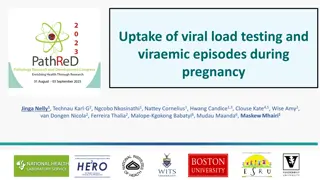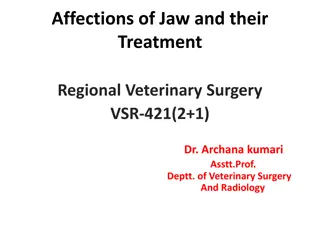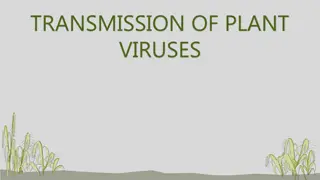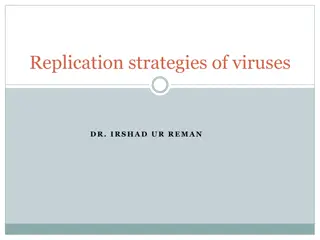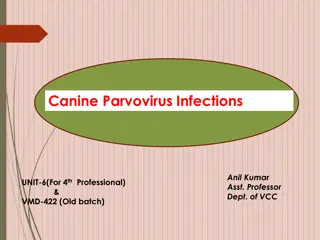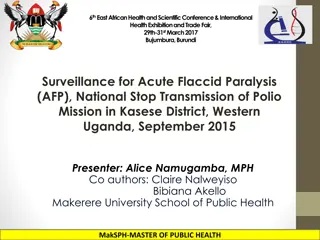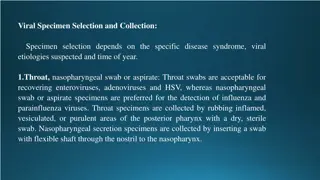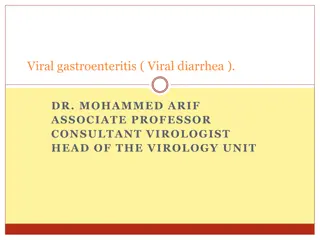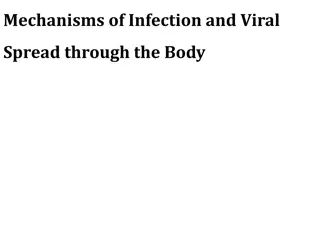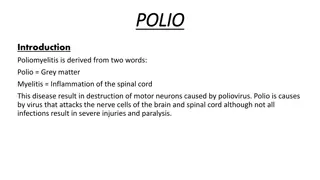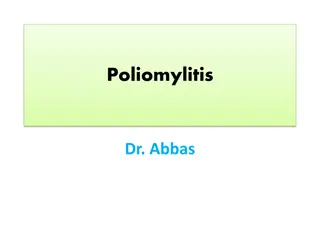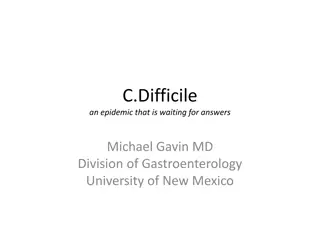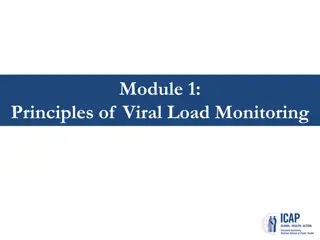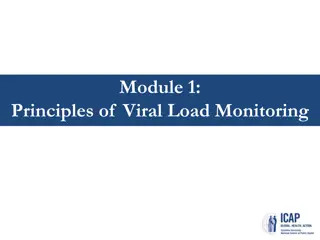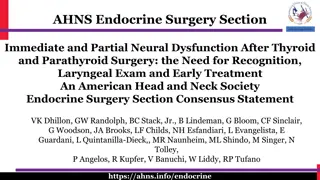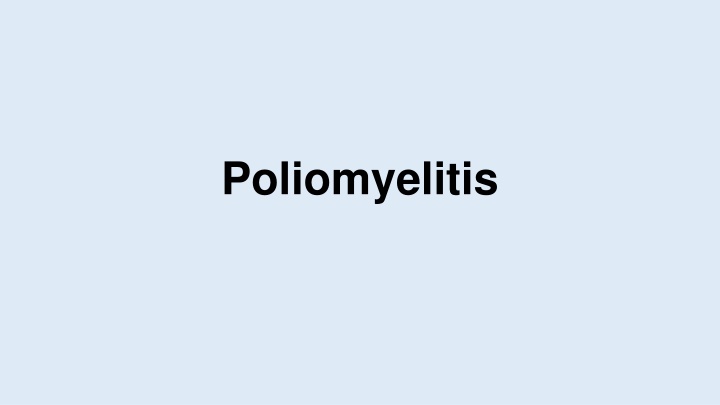
Poliomyelitis: Viral Infection and Paralysis
Poliomyelitis, caused by the polio virus, manifests in various clinical presentations ranging from minor illness to debilitating flaccid paralysis. This infectious disease spreads through fecal-oral transmission and primarily affects children. Prevention strategies include vaccination, education on modes of transmission, and public health interventions. The WHO polio eradication program emphasizes routine vaccination schedules and mass immunization campaigns to combat the spread of the disease.
Download Presentation

Please find below an Image/Link to download the presentation.
The content on the website is provided AS IS for your information and personal use only. It may not be sold, licensed, or shared on other websites without obtaining consent from the author. If you encounter any issues during the download, it is possible that the publisher has removed the file from their server.
You are allowed to download the files provided on this website for personal or commercial use, subject to the condition that they are used lawfully. All files are the property of their respective owners.
The content on the website is provided AS IS for your information and personal use only. It may not be sold, licensed, or shared on other websites without obtaining consent from the author.
E N D
Presentation Transcript
Identification: Viral infection, acute onset of flaccid paralysis can occur in 3 clinical presentations: Asymptomatic: 90-95% Abortive illness: 4-8% flu- like illness due to viremia, Paralytic polio: <1% Classified as: - minor illness: fever, malaise headache, nausea and vomiting, this may progress to : - major illness: severe muscle pain and stiffness of the neck and the back followed by the flaccid paralysis which is asymmetrical, permanent and with no sensory involvement.
Infectious agent: Polio virus (genus Enterovirus). Picorna Viraede 1, 2 and 3, all cause paralysis but mostly 1, less commonly 3, and rarely 2. 2 and 3 are associated with vaccine polio. Pathogenesis: GIT Primary viremia: Reticulo-endothelial system Secondary viremia: Brain stem Anterior horn cells Basal ganglion Cranial nerves
Occurrence: Prior to the EPI it was common but now decreasing because of immunization & eradication program, occur sporadically or as epidemics usually in areas of low sanitation and low vaccine coverage. Few cases of vaccine polio occur every year. M.O.T.: Feco-oral from person to person or by common source especially in low hygienic level.
Incubation period: 7-14 days (3-35). P.O.C.: Not precisely defined but transmission is possible as long as the virus is excreted in the feces. Susceptibility: Universal with some triggering factors: I.M injection during the incubation period Tonsillectomy:-- bulbar paralysis Pregnancy Vaccine polio Shifting of age Susceptibility
Prevention: Educate the people about M.O.T. Vaccine OPV & IPV Schedule of immunization Control: Report to WHO (1A) Isolation and enteric precautions Concurrent dis-infectants Quarantin: none Investigations & protection of contacts Specific treatment
WHO polio eradication program: Routine vaccination: Zero dose 2nd month 4th month 6th month 18th month 60th month
WHO polio eradication program: NIDs (National Immunization days) Two rounds Two shots each (4-6 weeks apart): - Spring (March and April) - Autumn (September and October) Irrespective to the immunization history
WHO polio eradication program: Mopping up: For all remote or hard to reach areas or areas with low vaccine coverage.
WHO polio eradication program: AFP (acute flaccid paralysis surveillance system) 1/100000/year for those <15 years (40%) Diagnosis as early as possible Admission to hospital within the first two weeks Two stool samples (24048 hours apart) Special kit, deep freeze, sent to central lab
WHO polio eradication program: AFP The result will be negative when both stool exams are good and negative. This should be continue for 3 successive years to announce the country as eradicated from polio.
WHO polio eradication program: AFP The results will be positive if: Failed to achieve 1/100000 cases of AFP/ year one of the stool sample is positive only one sample arrived one is negative and the other is bad Then there should be a 60th day exam: - If the exam is positive - If the patient is lost - If the patient died Then the results will be positive.



